-
Posts
551 -
Joined
-
Last visited
-
Days Won
17
Posts posted by Galway Girl
-
-
I thought one difference is how the Batteries get charged and what "unit" in the Oliver is doing the charging:
In our case: 2019 EII Hull 505
2019 EII has a 2000 W inverter....but that inverter doesn't have a DC charging output.
DC Battery charging is taken care of by the Progressive Dynamics, PD4000 Energy Center embedded DC Charger.
(It's a 45Amp DC charger for both AGM or Lithium, with a jumper to set it to either "Lead Acid" or "Lithium" chemistries which will be good when I upgrade from AGM to Li. When in the LI setting, the DC charger outputs 14.6V for Lithium.)Newer Olivers with factory installed Lithium Packages are using the XC Pro 3000 inverter which ALSO has a much heftier "DC Charging Unit inside".
(In other words, they aren't using the DC charger within the PD energy center, instead they use the DC Charger within the XC Pro 3000.)See the table below excerpted from the XC Pro Spec Sheets - 150 Amps will help charge a Lithium Battery much faster. Also the programmable voltage level will help users set it specific to the Li battery installed.
ELECTRICAL SPECS - BATTERY CHARGER
FREEDOM XC PRO 2000
FREEDOM XC PRO 3000
Min Battery Voltage for Charging
0.0 Vdc
0.0 Vdc
Max DC Output Voltage
18.0 Vdc (custom battery type)
18.0 Vdc (custom battery type)
Selectable DC Output Current
User Selectable: 5 - 100 A
User Selectable: 5 - 150 A
Full Load Max AC Input Current
24 Arms
25 Arms
Max DC Charge Current
100A
150A
-
 3
3
-
 1
1
-
-
Post a pix when you're finished.
Depending upon how you mount the Zamp Connector and the Switch....pay particular attention to where the "case closures" need to be in their fully closed position.
The switch position was something I messed up the first time, when I was "finished" the case closures couldn't fully engage, had to move the switch down a bit and plug the hole I had drilled.
Measure twice, drill once!
CS
-
 2
2
-
-
Yes, just took the cover off this week as we hosted a "Oliver Visit" today.
Got her all cleaned up inside and out looked great because it was under the cover all winter.
We sanitized the fresh tanks and flushed it twice.Also learned a quick way to "drain" the fresh tank is to open up Truma water dump spigot in addition to the lower tank drain and turn on the pump.
It quickly evacuated down to 6% of water then I shut off the pump and let it dribble over night.We're prepping for a set of trips soon.
Best wishes for a safe, healthy and fun camping season.
-
 1
1
-
 2
2
-
-
I'm planning on buying kits for our 3.5K axles as well to have spares on the road.
Looking for part numbers I found this...but I'ld like confirmation from the forum members.
This is a pix of the Axle lable for our Elite II - 2019
Below in the table is the replacement chart from the Dexter User Materials.
The last row I believe has the part numbers for the 3.5K Axles.
Can anyone here confirm the part numbers for our 3.5K Elite II axles are
Named as "set 4" - L44649/L44610
Named as "set 17" - are the L68111/L68149.I'm thinking of buying the kits.
Craig
-
- Popular Post
- Popular Post
Here'a a fun project that provides you a backup 12v Pump for your Ollie.
I bought a spare 12V Shurflo water pump to carry with me on our coming long long adventures around the US.
I decided to build it into a water transfer pump that I could use for multiple uses and still have a backup pump.Some ways I can use this transfer pump:
-
Transfer fresh water from portable tanks and bladders directly through the Oliver fresh tank port.
(This is without using the boondocking port.) - Use as a pusher pump for a bladder to the street side water port on the Oliver
- Use around the campsite as a portable pump for wash stations etc.
- Use as a backup pump should my main pump fail.
Electrical Consideration:
I designed this so it can hook it directly to the Zamp Solar Port on the side of the trailer as the 12V source.
That SAE Zamp port has direct connection to the batteries in the Oliver.I wanted to make sure to create a fused connection, and also be sure to wire it to match the Polarity on the Zamp port.
I put a matching ZAMP port on the pump case, and build the fused connection cable out of a pair of fused SAE solar cables.
The fuze is closest to the Oliver's ZAMP port for safety.
(Zamp also sells an excellent "replacement" cable that could be used for the project.)ZAMP Solar Port Polarity is reversed from typical SAE Connectors:

Zamp wires their solar ports in a way that the + lead on the solar cable coming from the solar array is into the plastic covered end of the cable.
(That's opposite normal SAE use. They do this to protect users from plugging into the solar array and touching the male exposed connector.)Here's a basic material list (if you want specific part numbers of connectors etc. PM me on the forum.)
I bought all of the material from the combination of Ace Hardware, Harbor Freight and Amazon.Total cost $190.73
1) Case: $39.00 Apache 3800 Transit Case - : Harbor Freight
( Interior Dim: 14 7/8"x10 5/8" x 6 1/8") Fits pump perfectly bolted into the case without the bottom foam.
2) Shurflo Pump model 4800, $72.00 - : Amazon/RecPro
3) Inline Shurflo Filter Model 15-085-00 included with pump - : Amazon/RecPro
4) Basic Fresh water hose (white) - $17.00 : Amazon cut to use short pieces for pump connections and used the other pieces as the input side hose (with a rigid piece of 1/2" pex as the drop lead) and outlet hose with repaired male end connector.
5) Qty 1 - Inlet side Female Swivel Garden Hose Connector (barb connector style) $1.50 ea - : Ace HW
6) Qty 2 - Male Garden Hose Connectors (barb connector style) one used on outlet, one to repair the outlet hose.
7) Qty 4 - 1/2" stainless pipe clamps - $4.00 : Ace HW
8) Qty 2 - SHURFLO (244-2926 1/2" x 14 NPT x 1/2" Barb Straight Wingnut Swivel Adapter - : Amazon
9) Qty 1- Zamp Waterproof Solar Port - : Amazon
10) Qty 1 - SPARKING 6' SAE To Ring Terminal Harness Quick Connect/Disconnect Assembly & 10A Fuse
+ SPARKING 2' SAE Quick Connect Harness (this is to make the other side of the cable) - : Amazon
11) Qty 1 - Fastronix SPST HD 20 Amp AC/DC Toggle Switch with Weatherproof Neoprene Boot - : AmazonSo here are some pictures of the finished project in the transit case.
Case in closed ready for travel position:

Case opened to show hoses and electrical connectors stored inside:
Contents removed so you can see the pump connection setup:
Hoses and electrical connectors shown beside case:
Handle side shows DC connector (that matches the ZAMP port wiring) and on/off switch:
Inlet side:
Outlet Side:
Assembly comments and learnings:
1) Pump body - originally I was going to mount it onto a pvc board but found that the depth of the transit case and height of pump worked out better if I could simply bolt into the case. I used 4 bolts with baking washers to secure the pump into the case.
2) Port locations - I tried to figure out a way for the ports to exit out the handle side of the box, in fact I bought some elbow connectors for the pump, but quickly found that they interfered with the closure clasps. As a result I went for a simpler straight side to side flow.
2) Electrical Switch Location - My initial hole for the switch ended up interfering with the closure clasp once the switch was installed and in the ON position. I decided to plug that hole with an automotive plug and move the switch mounting down a bit further. (See handle side view.)
Pump Performance:
1) I used the pump yesterday to pump a 6 gallon container of my tank sanitizer solution into the fresh tank.
The pump operated smoothly and the 6 gallons were pumped into the tank in 58 seconds.
(The pumps spec is 3 GPM ...so it met that spec.)2) I also tried the pump on the street side water inlet, and the pump would cycle on and off as I turned on and off
the sink faucets. So another use is to hook it up to a bigger bladder tank external and use it as the main water
supply. (*Note - The pump has a 55PSI max, and is factory set for 45 PSI working shutoff pressure.)The case stores nicely run the Oliver Elite II basement on top of my water filter holder.
Possible upgrades:1) I might add a stainless vent pair on the box so I can run the pump with the box closed.
The vent would allow for airflow in/out and adequate cooling space around the pump body if running for a longer time.2) Build a Zamp (SAE) to Anderson Connector so I can plug this into my truck power port's that I'll install this summer.
3) Try running this pump off of a small rechargeable 12v Lithium Battery bank. Make up appropriate 12v connectors.
Questions and comments welcome.
Craig Short
Hull 505 - Galway Girl-
 6
6
-
 12
12
-
Remind us what sensors you have for all this spaces?
Craig
-
The tank upgrade is in prep for an Alaska trip in the future...and will save us having to more than one jerry can for backup.
-
 1
1
-
-
Trainman,
Thanks for the feedback.
When I started, I was thinking of examples from older QSL- ham call sign contact cards.
They often show ham's gear, sometimes the antenna farm and in other cases a pix of the operator and the call sign.This is my first attempt at a card aimed at establishing a more email / web contact.
I kept personal pictures off the card and focused on our contact info and "web page" access up front.
In the web pages, you'll find we are in some of the camping photos in the website, so if the person goes to look at the
blog pages, that will help them remember...and they'll see all kinds of extra detail about the trailer as well.CS
-
We also use AccuRite 3 zone as stated above and as shown in our blog here:
https://4-ever-hitched.com/ggs-blog/f/keeping-gg-safely-warm
-
BlueHighways>
From experience, yes indeed, make sure you back up a set of .ABT files before you do anything.
Also you can to to the Ford Support Pageand get the "AS Built" .AB file for your truck by VIN #.
https://www.motorcraftservice.com/AsBuilt
That .AB file can't be directly imported in total on one go, but it can be imported at the module by module level in Forscan to perform a reset back to original if things for each module if things out of whack. For example, you would go to the Instrument Control Panel module, load and write from the ford .AB file, and Forscan will parse the data and load just the Ford Original ICP data. (I had to do that because I fat fingered some data on a line.)
Also be aware 2020-21 was a key year when Ford changed the formats for the As Built codes.
This was because starting in 2020, they added MORE computer/control modules...so the line numbering changed in the file structure for official Ford .AB files. Now we must be careful to look for the appropriate year AS BUILT spreadsheets. Some of the older 2017 lines still work, but many other don't in 2020/21 models.Craig
-
 1
1
-
 1
1
-
-
John,
Thanks for the tip, I just removed the pix with the detail...left one with the QR code.
CS
-
 2
2
-
-
We are one of the registered Oliver owners who show our trailer to those thinking of buying an Oliver.
We created new "trading cards" to hand out as appropriate to visitors and for friends we meet on the road.
In this instance we've also included a QR code, which when scanned with a smart phone or tablet will show the link to our blog page where we review various campgrounds, and list some of the many accessories Oliver owners find useful.
Please give it a try and see if scanning the QR code takes you to our website:
Craig

-
 5
5
-
 1
1
-
-
Seems like a great idea John.
I assume that the current grill is essentially the cold air return for the furnace?
CS
-
I recently upgraded from a 34 gallon stock fuel tank to a 60 Gallon S&B Fuel Tank.
The install was into our 2021 F350 6.7L Crew Cab/Short Bed. It fits in midship as shown in the image below from the S&B Tanks Site:As part of the upgrade process, I needed to use Forscan to update the "fuel tank size" so the dash display correctly displayed distance to empty.
I now have a scanner, and the Forscan software and have learned quite a bit on how to "safely" make modifications to things like the display settings (added TEMPs to gauges) and the features.Now with the upgraded tank we're ready for the long road trip planned for later in 2021.
Here's how the updated range looks on the Ford app...and that's after a 50 mile drive.
Any questions just ask.
Craig-
 2
2
-
-
Very creative solution....Thanks for posting.
Hull 505 - 2019 EII - Galway Girl
C.S.
-
FWIW- We use this low profile electric heater from Caframo - True North model 9206.
Caframo is a Canadian Manufacturer typically you see their products like fans and gear in the boating world.
True North is a small low profile heater, and that means it doesn't get tipped over (but has a shutoff if it does).
We find it's pretty quiet even at higher speeds.
(Not as quiet as our Vornado, but we find this heater puts out more heat as well.)
It also has a setting for long term storage.
If set to the temp dial to the blue "Snowflake" setting, when the temp drops below 34F it comes on to warm back to 40F automatically.
That's how we used it in our boat to keep it dry in winter.We've used it for 2 years...but had one in a boat for about 5 years and they worked flawlessly.
You can see a bit about it in our blog post here:
https://4-ever-hitched.com/ggs-blog/f/we-love-our-caframo
They are on our Oliver Outfitters list on amazon as well.
Craig
-
I have confirmed that Disney uses Lithionics batteries in their ride vehicles and other attractions as they are one of the safest, rated battery makers in the US. For example, their new ride, Rise of The Resistance vehicles are using custom designed Lithionics batteries and they are run all day long, and recharge at a docking port.
I'm excited to see them coming in 2022 models and would consider doing a Oliver Service upgrade if they come available.
-
 1
1
-
 1
1
-
-
Outside we use a 3 stage outboard filter from Clear Source which includes:
Stage 1 Sediment, Stage 2 Block Carbon and Stage 3 a 2 u finisher.
Inside we're using a Burkee Travel size.

-
 1
1
-
-
Take a look at the rear water inlet closely straight on with the cap off.
Do you see a HEX shape in the entry port?
If yes, then that port is the same type of stainless connector used on the street side of the trailer and it may need to be snugged up a bit.
Those inlets are installed and tightened carefully with a 1/2" hex key. (Which is pretty large.)The stainless inlets have a rubber O ring on the back side of the fitting where it joins main mounting plate.
I had mine vibrate loose once, and I didn't have the 1/2" hex wrench so I simply used a pair of needle nose the first time to snug them up.
If the inlet is too tight it will squish the rubber o-ring that seals them and the chrome barrel that connects to the hose won't freely spin.
If they are too loose, then you'll have an air leak (and water leak).
The right tightness on the hex bolt will allow the connecting ring to spin freely yet maintaining a seal on the unit.I now have a 1/2" hex key on board.
The part used by Oliver is:
Ambassador Marine, Model #P56-0191-SSRequires 1/2" Hex Key for Tightening

-
 4
4
-
 2
2
-
-
I bought one of these for my trailer toolkit on Amazon.
I know it's quite a bit more than the small 15/20 amp testers I also own, but I consider it a convenience for the 30A checks.They come in 30A or 50A, and you can also buy a version that is just a small inline surge suppressor (see second pix) .
Or you can by both the Tester an Supressor in kits...-
 2
2
-
 3
3
-
-
First - I'm so sorry for your predicament. It's frustrating at best, and at worst can cause you a loss of confidence in your trailer...and perhaps a loss of frozen foods. Neither are good.
Now as to the troubleshooting flow I see in your manual it shows this diagram:
Hopefully pushing the button for source selection works, and it let's you manually select DC or Gas.
Until you "AC Power" issue is solved, at least you can keep your food cold on Gas or DC.
FYI - If we are hooked up to AC we use AC for the fridge, other wise we use GAS as our first choice
(as others stated, Norcold's actually cool better on GAS than on DC.)
Also, for these Norcold units, they suck a lot of DC current (like 5-7 amps) so they run down your batteries pretty quickly.
Running on GAS is the most effective way if you don't have AC or if the AC circuits have an issue.As far as the troubleshooting workflow I think the idea is if it seems to give an ERROR 10 , and is looking for AC power...the troubleshooting tree might look like this. First start at the power pedestal, making sure you have power to the trailer. Then inside the trailer if you have power, check for power to the wall plug where the fridge is plugged in. That comes through the circuit breaker panels (black box). Then if the power is ok, it may be the fridge came unplugged....not likely but it has happened before in other cases. After that if you have power to the fridge and it's still saying Err10 it may be a board fault with the Norcold unit.
I'm so sorry for your issues at the start...but once you get beyond those I'm sure you'll be doing joyful dances...more often.
Galway Girl's Owners - Hull 505-
 2
2
-
 3
3
-
-
Sorry for the delay, we keep the generator in the back of truck as we don't always need it at each campsite.
I am able to chain it up if needed while running.We keep a Rubbermaid Roughneck tote in the Tongue Box.
It holds all our chocks, blocks and tools for hitching & unhitching.
I fits in with a bit of room around the edges...which is where we stow the bungee's when we're camping.
-
Thanks for the Air Bag tip. I think it's good to consider.
In our case we are only mounting like Topgun2 did on the driver side.By the way, I've driven about 150 miles now with no interference issues from the installation of the USB charger port into that dash tray.
Craig
-
 1
1
-
-
We bought a dual fuel Champion 3500.
Pros:
- Price is much less than comparable Honda or Yamaha.
- Running on propane keeps the units clean and they don't have fumes after running when stored.
- Noise level = noise level under load is the same a the Honda 3000 and unloaded just a couple dB louder.
- It has 3150 Starting for AC's and is plenty beefy to run both the battery chargers and other appliances while running AC.
- Built in 30 amp connector that matches our shore power cables.
Con:
Weight - it is heavier than the 2200 line but it has a handle and wheels which makes moving it pretty easy.Uses:
We have found even with Solar, we sometimes need the generator when boondocking to charge batteries in cloudy weather.
We can run the AC on this unit, and it also runs the on board battery charger at the same time.A standard size 20gal BBQ propane tank can run this thing for a total of 15 hours.
We normally run it about 3 hrs/day so for a 20 gal BBQ tank, that means 5 days, or using one of our Oliver 30 gallon tanks for about 8-9 days.Link to an online review:

-
 2
2




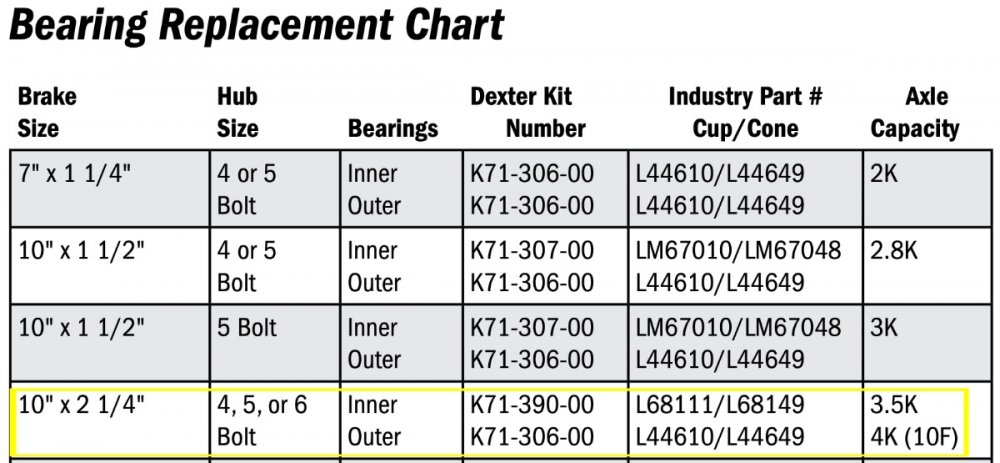

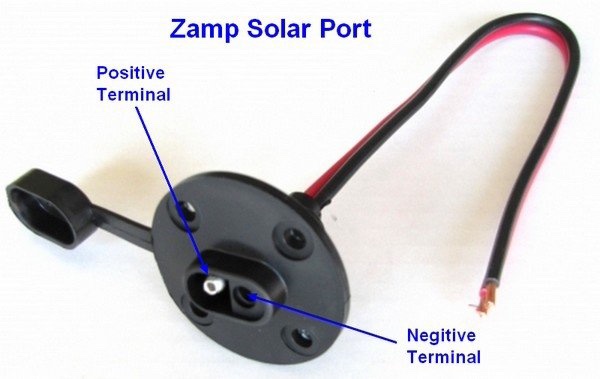







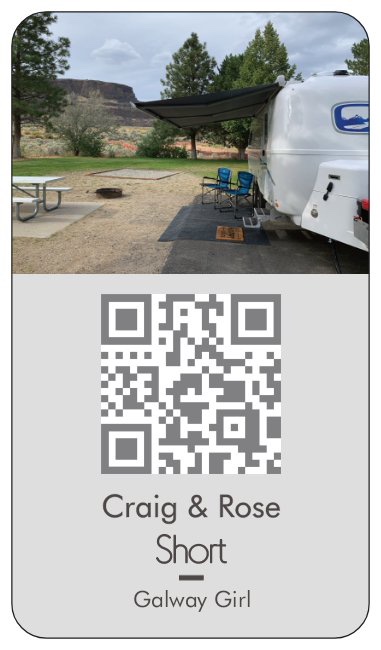
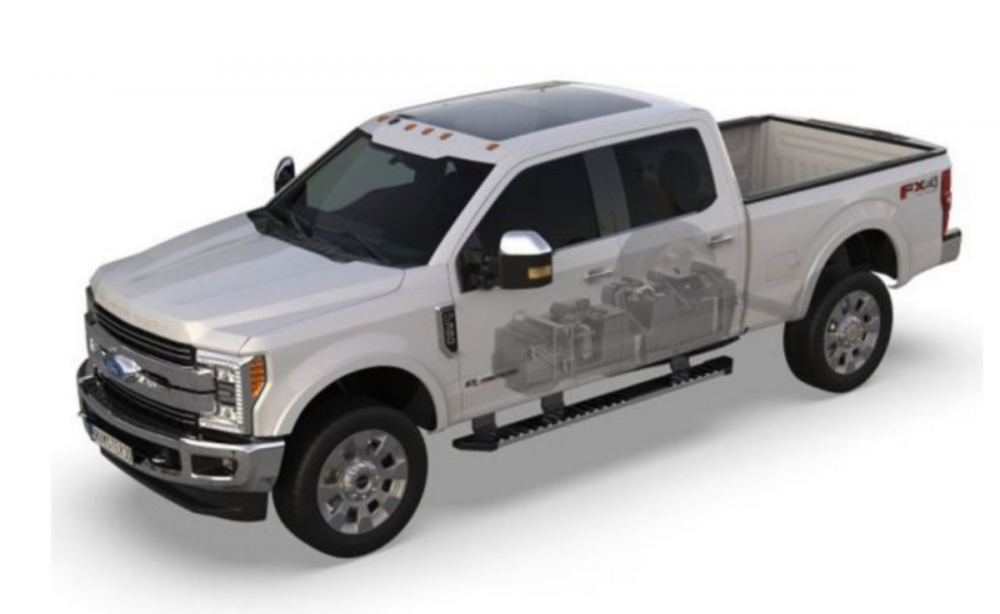

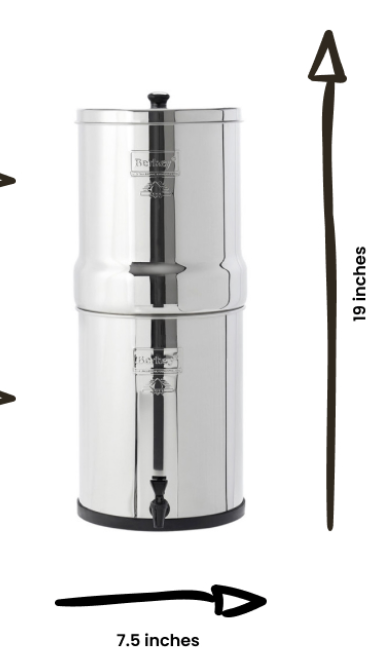

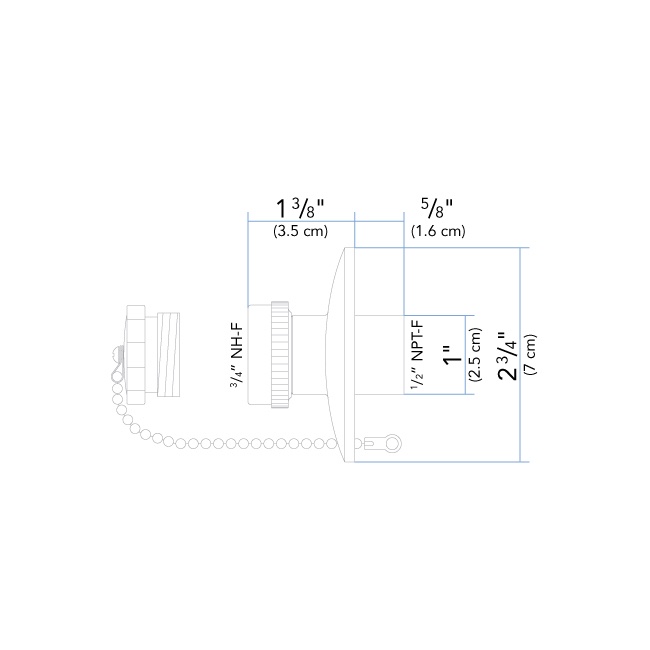




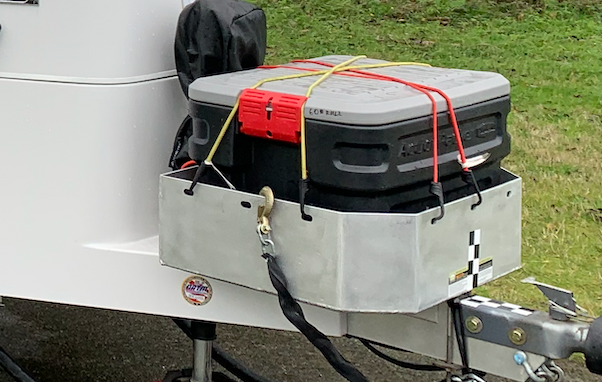
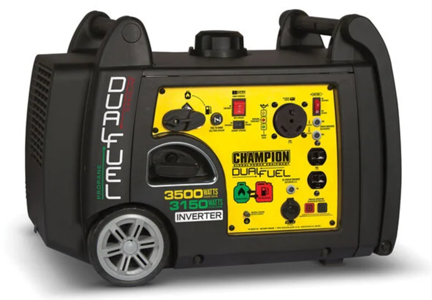
Door step binds, both opening and closing.
in General Discussion
Posted
Look for WD 40 - Specialist Dry Lub with PTFE (which is teflon).
That works great and is available at most parts stores, amazon etc.
This also can work on the legs of the Electric Jacks without attracting dirt etc.
It sprays on a bit like any other wd40 but drys to slick teflon clear finish.